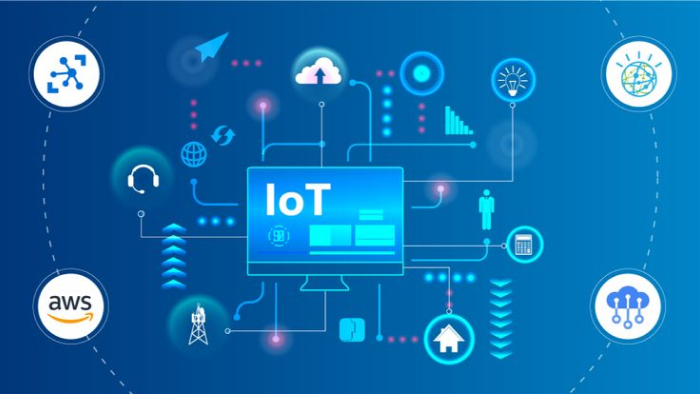We offer a comprehensive suite of services for the design, development, implementation, and launch of connected IoT products.

Our IoT Product Development Services
IoT Product Development Stages
Integrating IoT into products enhances real-time data capabilities and overall quality. Our IoT Product Development Process consists of three stages:
Product Hardware Identification
Connectivity and Data Transmission
Software and Cloud Integration
Product Hardware Identification
Two types of hardware are essential for IoT product development: one for sensing elements and another to convert electrical signals into physical outcomes. Our team possesses in-depth knowledge of various IoT boards, connected devices, and sensors, guiding you in selecting the right hardware for your IoT product.
Sensors We Use:
- Temperature Sensor
- Proximity Sensor
- IR Sensor
- Gas Sensor
- Pressure Sensor
- Accelerometer and Gyroscope Sensor
- Optical Sensor
- Smoke Sensor
Connectivity and Data Transmission
Our experienced IoT systems engineers implement secure wireless controls and connectivity options, including cellular, Wi-Fi, Bluetooth®, RFID, and GPS, ensuring real-time data transmission without security breaches.
Connectivity Options:
- Bluetooth
- Wi-Fi
- LAN
- LoRa
- Near Field Communication (NFC)
- Radio-Frequency Identification (RFID)
- Ethernet
- Network Protocols (TCP/IP, UDP, RTP, RTSP, Gstreamer)
Software and Cloud Integration
We develop web and mobile applications that enable real-time control of IoT product functionality. Our custom software solutions are hosted on cloud servers, facilitating monitoring, control, optimization, and autonomous operation of product functions.
IoT Platforms We Use:
- Azure IoT Hub
- AWS IoT Hub
- Predix
- Google Cloud
- ThingWorx
- Ethernet
Our IoT Product Development Process
Stage 1: Concept Development
In this stage, we collaborate with clients to identify risks and challenges while developing concepts for the product design and build.
Core Activities:
- Risk evaluation of core features
- Planning and concept experimentation
- Enhancing and testing design aesthetics and functionality
- Engineering architecture plans for EE, SW, and ME
Stage 2: Detailed Engineering
We focus on engineering a complete “ready for production” solution.
Core Activities:
- Model simulations and prototype exhibitions
- Developing engineering specifications
- Proving and refining primary design features
- Designing 3D CAD assembly geometry
- Custom firmware coding and PCB layout
Stage 3: Prototype and Test
We develop and test the production-ready “alpha” prototype.
Core Activities:
- Validating usability, aesthetics, and functionality
- Verifying product requirements
- Refining for volume manufacturing
- Connecting with reliable production and component suppliers
Stage 4: Manufacturing Support
We assist clients in engaging the right manufacturing partners and transferring knowledge to production teams.
Core Activities:
- Implementing quality control processes
- Engaging high-quality manufacturing partners
- Coordinating product file management with document control
- Supporting test run approvals for volume manufacturing















